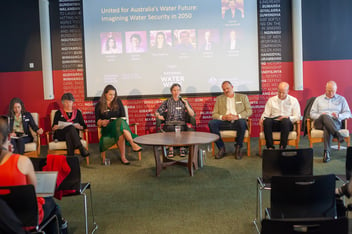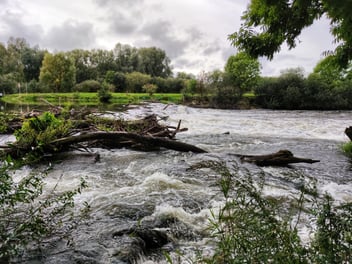This engineering firm believes its infrastructure can incorporate social responsibility right from the start
Ever thought of enmeshing social value initiatives into infrastructure projects? With the costs of servicing burgeoning populations increasing and the socio-economic gap widening worldwide, one engineering firm has set its sights on taking a socially sensitive approach to capital investment.
Jacobs has released Before & Beyond the Build, a thought-leadership paper detailing five approaches for generating social value by leveraging the full life cycle of infrastructure projects: big data analytics, co-design, blended funding, social procurement and social value measurement.
The paper defines social value as: “the total impact of a project or investment on society, which includes sources of value that cannot be defined by conventional market economics.”
“At its core, it is a people-centred holistic assessment of total impact that facilitates a focus on areas which are of the greatest value to society as a whole,” the paper states.
Jacobs People & Places Solutions Executive Vice President Patrick Hill said the need for a more socially equitable way of designing and implementing infrastructure projects is urgent.
"The current pandemic has brought global societal challenges like wellbeing, equity and equality into stark focus," he said.
"As governments around the world make plans to rebuild economies and livelihoods, now is the time to think about the role of infrastructure investments in building strong and vibrant communities."
Rethinking infrastructure
Jacobs Social Investment and Innovation Asia Pacific Principal Consultant Sarah Alexander said the blueprint aims to use infrastructure expenditure to increase social wellbeing in the communities it serves.
“The social value blueprint comes from what we here at Jacobs have seen in the world around us and our clients’ work. It’s also a reflection of the global recognition that what we measure is perhaps not necessarily leading to the wellbeing outcomes and the society we all want,” Alexander said.
“Huge amounts of money are about to be spent on it. How can we really leverage that to think about much wider outcomes?”
Alexander said the blueprint aims to re-think the entire infrastructure life span in order to make space for aims and outcomes that bolster social wellbeing.
“We have these great concepts, great ideas, but how do we actually make them real? Not just in the big decisions around budgets, but also in the way that we plan, design, and deliver, and even operate infrastructure and assets on the ground,” she said.
Expanding the toolkit
Including big data analytics, co-design, blended funding, social procurement and social value measurement, the blueprint is a reflection of promising real-world solutions channelled through a social value lens.
“They're all emerging models or trends that we've observed. We've seen different components be tested and tried, and sometimes have really great success across a whole range of different types of projects and assets,” Alexander said.
“Firstly, who are we actually designing for? When we think about the infrastructure and services associated with the water sector or the transport sector, how do we start to put the people and the users at the centre?”
Alexander said big data and innovative funding partnerships are two clear tools for creating and sustaining socially valuable infrastructure projects.
“Big data analytics gives us a very quick way to get a really granular and nuanced snapshot about how people behave without leading to stakeholder engagement fatigue as well,” she said.
“Secondly, how do we actually fund all of this? There is no lack of willingness in the water sector to think about these things. But there's that practical element of funding.
“Blended funding and social procurement are really important. Blended funding starts to bring in different types of partners, who may place different priority on different objectives, that helps enable, and actually fund, social value.”
Creating social value
Jacobs Water Sales Asia Pacific Executive Director David Middleton said there is a big appetite for social value projects in the water sector, with plenty of examples to pick from, but that what’s now needed is a way to start measuring impact more comprehensively.
“Quite a number of our water industry clients are already doing things that could be bundled under the heading of social value,” he said.
“Examples include Yarra Valley Water’s Citizens' Jury and City West Water's Greening the West. These are very clear examples of things that weren't your conventional infrastructure bill or customer engagement process.
“The big challenge now in my mind is how do you put it all together and start to measure the social value and the community wellness that you're creating through the way that you're delivering your infrastructure and the infrastructure that you're delivering?”
Middleton said Jacobs is now looking to test the blueprint with clients in order to start measuring impacts in terms of social value.
“What we're looking at is how we work with our clients as they develop their next price path, and to start using the blueprint tools to engage with their customers on different levels,” he said.
“We want to talk about co-design, the use of big data, and then, of course, bringing it all together in terms of measuring the social value that's being created.
“While many of our customers are doing elements of this already, it's about integrating it into the overall process, especially planning and delivery, and we're certainly talking to a range of clients in the broader industry in Australia about how we want to do that.”


